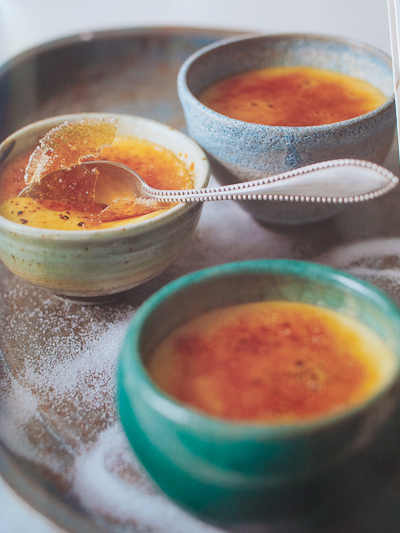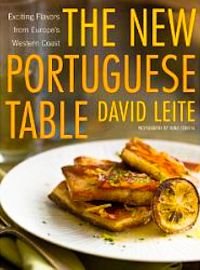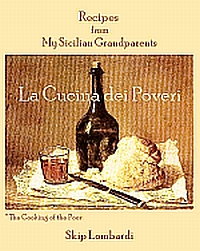The New Portuguese Table
May 9th, 2010When I lived in Portugal, it was not yet a member of the European Union. USAID still had a Lisbon office because, even in the 1980’s, Portugal’s economic development lagged far behind the rest of Western Europe and the nation met criteria for American aid.
Despite decades of northern European and British tourists seeking sun of the shores of the Algarve province, Portugal’s cooking was conservative, and I mean that in a positive way.

Photo Credit: Nuno Correia from The New Portuguese Table
Cooks were fiercely self-confident and their dishes regionally distinct. The country’s legions of farmers and shepherds as well as its coastal Atlantic fishing fleet made most Portuguese locavores by default. The words “nouvelle cuisine” had not yet been whispered in Lisbon, where culinary fusion (circa 1985) meant that medieval Moorish recipes for marzipan and candied egg yolks might incorporate chocolate from Portugal’s former colonial plantations in Brazil or Angola. French influence was present, but only in the kitchens of the old aristocracy or chandeliered restaurants where London wine importers lunched with Lisbon bankers. Techniques and sauces of the ancien regime français had arrived with bayonets, when Napoleon’s armies overran the vineyards and groves of olives, citrus, and stone fruits surrounding Portugal’s quintas, the grand country estates.
But like David Leite, whose southern New England turf I’ve shared, I first knew a very different kind of Portuguese culinary world, that of the Portuguese-American diaspora, largely from the Azores, Portugal’s mid-Atlantic islands. Azorean mariners had settled amongst earlier immigrants—the Germans, Irish, Italians, and Slavs of New England ports and mill towns. They founded their largest enclaves in Massachusetts and Rhode Island and their struggles and success, like those of all new American immigrants, would be reflected in the food and drink of celebration, homesickness, and consolation.
It was a world of boisterous relatives crowded into kitchens that the adolescent David Leite, wishing to be reborn as a WASP, tried to escape. Fortunately maturity and the flood of culinary nostalgia that can overtake us as we contemplate the inevitable loss of beloved elders pushed him to reexamine his cultural identity. He set about to gather recipes from his mother and grandmother.
Then Mr. Leite embarked, not just for the Azores (his parents’ birthplace), but also for Iberian Portugal, to discover that the 1950’s Kodachrome postcard-views, his family’s recollections, had faded. By the 1990’s, Portugal, that once-charming backwater, had become a full-fledged member of the European Community. As Mr. Leite dined with urbane friends immersed in the sophisticated and rapidly changing gastronomic offerings of Lisbon, he was astute enough to realize that he must “embrace this meal, this dining scene, this Portugal.” More importantly, he recognized that, in doing so, he was not “betraying” his family.
Most of the recipes of The New Portuguese Table have antecedents in typical Portuguese home-cooking, but Mr. Leite may use duck breast (rather than the whole bird) or give instructions to braise, rather than to fry in lard. He gives the nod to modern equipment like immersion blenders. Portugal’s cooks at both the home and restaurant levels are reaching into the global pantry and embracing more culinary influences from Portugal’s former colonies in Africa and Asia. Ingredients like fresh ginger, bird’s-eye chilies, and star anise show up frequently.
Frango Naufragado, Shipwrecked Chicken, is a vagabond that supposedly made its way from Mozambique to Chinese Macau via Goa before showing up in Portugal. Whatever the back-story, it’s delicious: grilled chicken meets coconut milk tomato paste, lemons, and chives. Fusion is now the operative word.
Mr. Leite gives us some real curiosities, including an old recipe for Licor de Leite. The liqueur may have a dual heritage in both the distillation techniques perfected by teatotalling Arabs and in the infused digestives concocted by cloistered Catholic orders.
But for those who simply want to recreate flavors from a honeymoon trip to Faro, Cascais, or Nantucket—Mr. Leite has some old favorites like Caldo Verde (Kale Soup) and Lulas Recheadas (Stuffed Squid). Meanwhile, he and his collaborators have created new dishes with staple ingredients—chouriço bread, fava bean salad, cilantro pesto, crème brulée infused with rosemary, and what can be legitimately described as a salt-cod slider or bacalhau burger.
The author acknowledges that “dishes… put in front of me by the women who love me” are the true foundations of the book. David Leite honors those old ways as he gives his readers new ways to capture and enjoy the distinctive flavors of classic and modern Portuguese cooking.
The New Portuguese Table is embellished with the work of photographer Nuno Correia and a team of food stylists and prop finders. Their efforts exemplify fine cookbook illustration and perfectly express the essence of Portuguese food.

The New Portuguese Table:
Exciting Flavors from Europe’s Western Coast
David Leite
Clarkson Potter (August 18, 2009); 256 pages; $32.50



